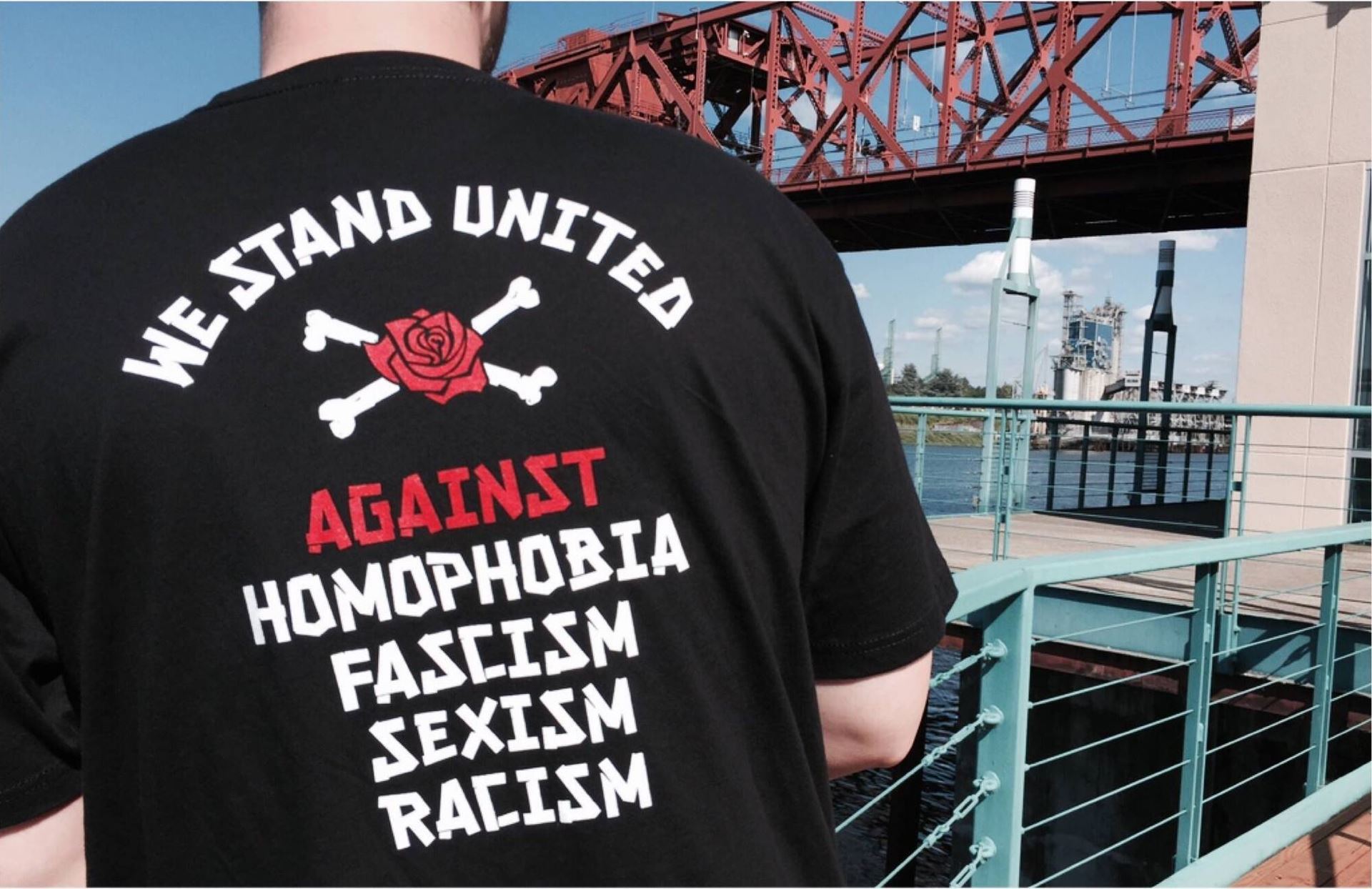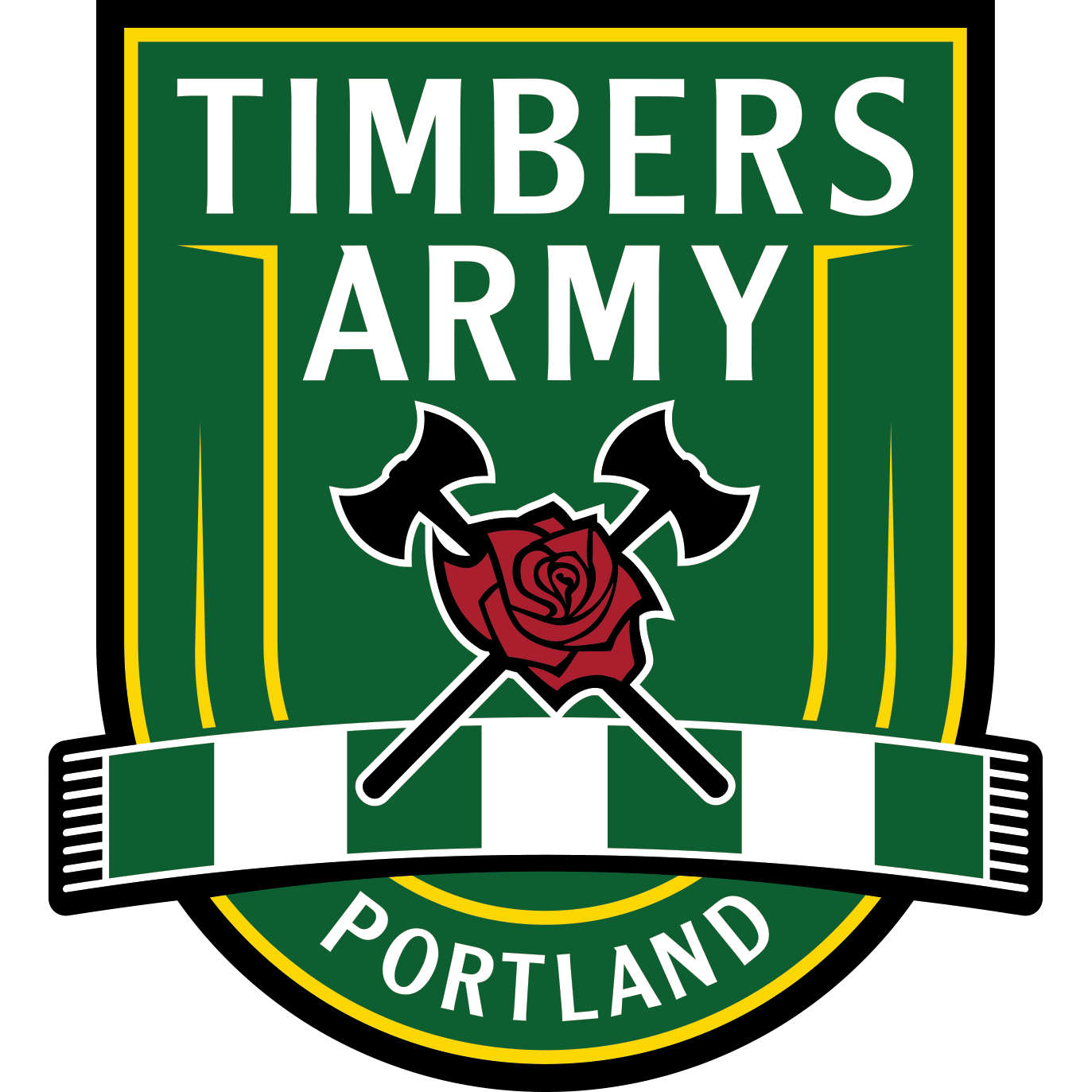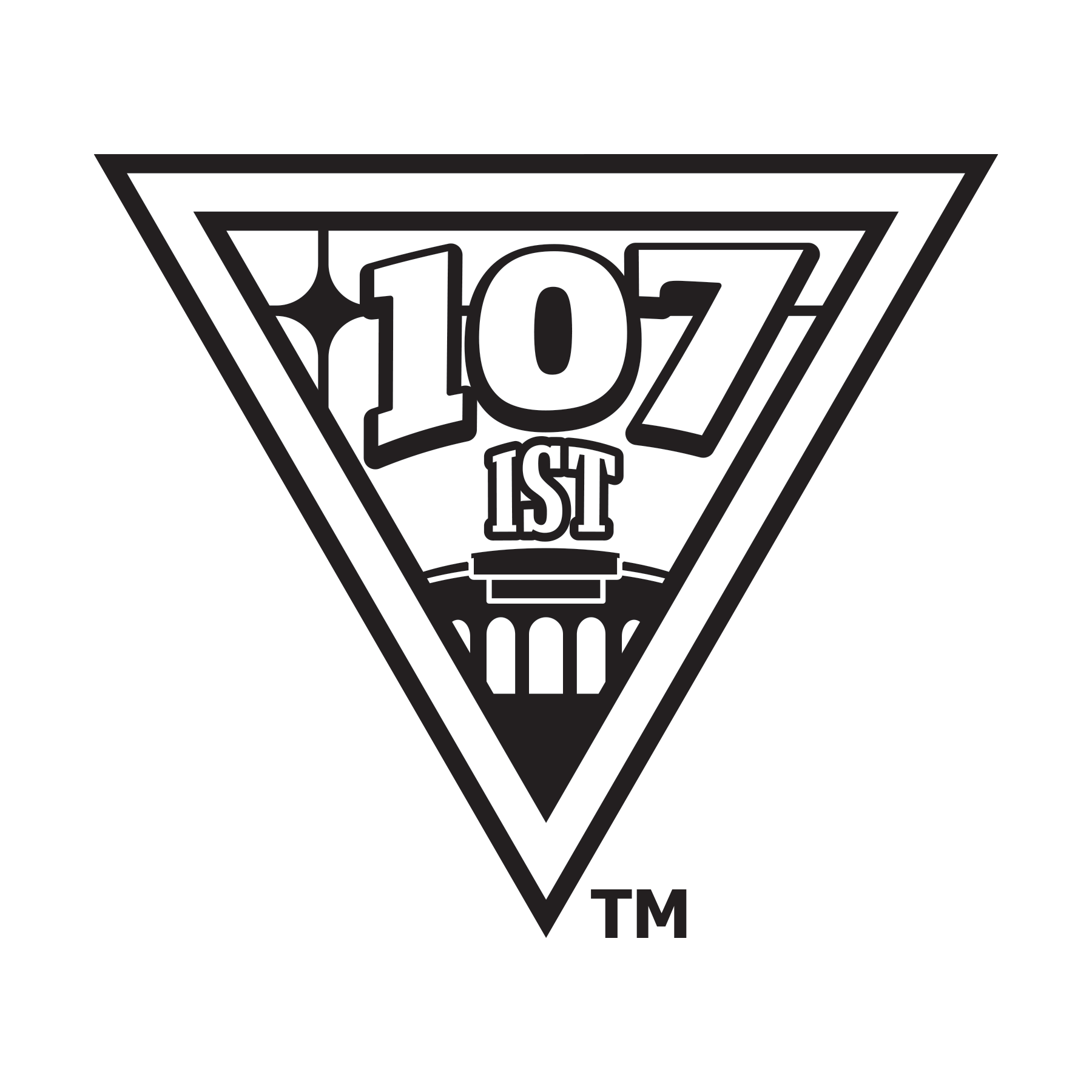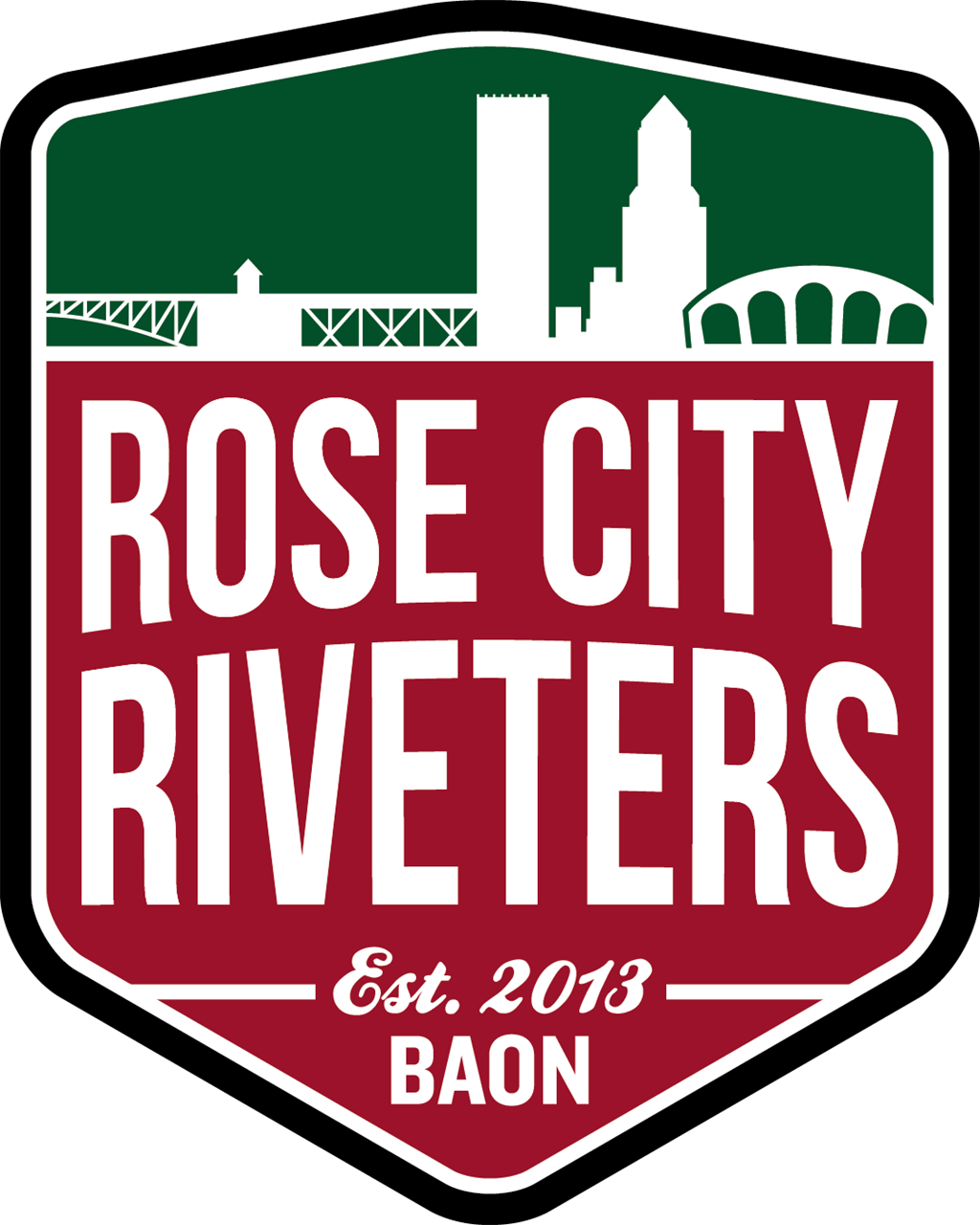
With St. Pauli in town, there’s been a lot of referencing of our cultural similarities. However, there’s a lot we do that doesn’t get a lot of air time and now is a really good time to tell some of those stories. Not just with this meeting of our two like-minded clubs and supporters groups; this coming weekend marks a year since the deadly MAX attack that shook our community and brought an aspect of our story into global discussions about hate. For this, we’re going to share a few stories of hope from the last year.
On the Friday before the last week of school heading into the summer break, school kids get the -itis and middle schoolers are no exception. As they leave school for the weekend, they dread having to return for another week as focus is at a major low. We’ve all been there. For two girls walking to the bus from school last year, the experience was shockingly different. Walking from Hosford Middle School to catch the 4 on Division, a pickup crept next to them on the street and delivered a barrage of hate-filled vitriol that took many in the community aback, particularly since the attack on the MAX had just happened. I can’t speak to the reaction of the girls and can only imagine what that must have been like. I can, however, speak to the reaction of the community.
As members of the coalition Portland United Against Hate (PUAH), we caught wind of this incident shortly after the it happened and, given one of our strengths is quick volunteer recruitment, patiently awaited the right time and circumstances to react, with special attention given to the sensitivity around schools. (I’ll elaborate more on PUAH below.)
The principal looked to the district for help, who looked to Safe Routes to Schools for help, who looked to Oregon Walks for help, who, given our strong relationship with these groups that we’ve strengthened over the years, looked to us for help. Having the go-ahead but still wanting to keep everything on the down-low, we organized shifts during their morning and afternoon commutes and invited 107ist members that lived close to that area.
The first morning shift, no one knew what to expect. We had enough people to cover the main choke points and had teams staggered strategically through the area as school staff looped over the main walking routes to the school. As we walked out to our spots, anti-hate stickers and posters that had been put up over the weekend lined our path and we settled in for the kids to start trickling through.
Many of the parents decided to accompany their students to and from school that first day. As you can imagine, the middle school kids were not down with parental escorts and kept a solid distance ahead of them. As one bus pulled up, a kid jumped off in a bound that immediately put her twelve feet ahead of her mom as she negotiated the stairs off the bus. Most of the parents made sure to stop and thank us for our presence, or at minimum, give us a nod of approval. One parent stopped to talk as she was waiting to meet her son and walk him home; it took her a while to realize he ditched her and walked around the long way.
While we were fully prepared to represent the strength of our convictions against intolerance, what happened is what usually happens when we get together. We Spread the Love all over the place.
As members of the immediate community heard about what happened, they started to swing by and join us too. By the second day we amassed an even stronger presence, and we were assigning the local dog walkers to wander where some gaps were on the back side of the school. By the third day, we had members of the business community joining us as well.
We came together to show our disgust, as a community. We came together to show our strength, as a community. We came together to Spread the Love, as a community. We came together to attempt to heal, as a community. We came to together to move Onward, as the Rose City.
This is a process we’re familiar with as an organization. This process was affirmed when reps from the Timbers Army and Rose City Riveters attended a PUAH-hosted presentation from a national leader in the battle against hate groups: Scot Nakagawa, senior partner at ChangeLab, who played an active role in the battle against hate in Portland in the 90s, specifically in the punk rock and alternative* music scenes. His presentation and subsequent discussions covered the history of hate groups in our region and their current presence as well as best practices for curbing the influence of those groups.
A lot has been said in the last year about the history of hate in this region. It doesn’t seem to jibe with the image some have of us as a community. As a Portland native from a family of mixed heritage, I’m here to tell you it’s never been that place. I came of age here in the in the 90s and can say this place has always had an edge. I’m not going to sweep that history or the longer-term history under the rug, or lie to myself that it disappeared before raising its head in recent years. I will say that it went underground, not because of some hippy-dippy BS, but because it was actively pushed there. It’s said now that residents, the city, and businesses collectively came together to win the battle against local hate groups, but that’s not what I, or my peers, saw. Portland was a murder capital back then. Grown from the dark history of our region which more of you have become aware of this past year, gangs from SoCal took advantage of the pockets of hopelessness in our urban fabric and brought with them a wave of violence that saw many deaths from both gangs and the police. This had a hugely negative impact on the local hip-hop scene as most clubs either stopped having live shows or flat out had to close after some fool started shooting his gun outside, resulting in the scene being driven more underground while it thrived in other parts of the country. On the other side of that, we used to tell people who came here in all seriousness, “Don’t fuck with the Portland Police, they’ll shoot you”. No joke.
During the 90’s a wave of Neo-Nazi recruitment swept the country targeting the disaffected youth in the punk and alternative* rock scenes. They’d prey on their angst and offer to fill them with strength by making them out to be better than others instead of allowing them to celebrate who they are as individuals, collectively. The human brain is designed to focus more easily on fear and is susceptible to the use of hate to combat that fear as a very primitive level. Healthy communities, however, are based on trust, connectivity, and acceptance. Hate is a threat to community as it actively weakens it conceptually, physically, and spiritually. Hate is a threat to the soul of a community and must be addressed head-on.
Portland, of course, was not immune to this assault, as organizers of hate groups tried to capitalize on our sordid history and the confusion of the time. It’s the fight back that grew out of the punk scene that was different than other aspects of the city’s fight against hate groups. There was a zero-tolerance ethos against hate that was more aggressive in defense of our culture. As Abe mentioned in his recent post, How I Fell in Love with St. Pauli, this is an ethos we shared with St. Pauli supporters that directly informed the creation of the Timbers Army, that led us to form the 107ist in defense of our culture with the move to MLS, and was a key cultural element in the creation of the Rose City Riveters. Now, we can’t pretend that we’re God’s gift to addressing intolerance or that we’ve fought the toughest battles, but we are building on a worldwide movement within supporters culture and like-minded groups. Not only do we bring it to the terraces and lift it into the rafters, we take our strength and our love out into the community not just with words and dollars, but with our sweat equity. That’s what we bring to Portland United Against Hate and we are valued at the table for it.
So, some background on PUAH. The coalition was formed in the wake of the heightened frequency of hate crimes that followed the 2016 elections, when a core group of organizations within the city collaborated on a joint statement addressing shared concerns, thoughts, and feelings. Having built working relationships with many of the organizations, recognizing some of the limitations of the orgs and the overall strength of the joint statement as it applies to our ethos, the 107ist was an early adopter in the second wave once the statement started to circulate. As we brought our strength of convictions to the table, we had some of the core orgs that we’d worked with corroborate our convictions as the real deal and not just a bunch of schmucks that dance around at soccer matches.
Starting with bi-monthly meetings and frequent work sessions, the goal was to figure out how to proceed collectively. Structured under the umbrella of the city’s Office of Neighborhood Involvement, PUAH received $40,000 for a pilot project to better address hate crime and create incident reporting procedures. We presented this pilot project to the Portland City Council in their May 3, 2018 PM Thursday Session earlier this month, and you can catch that presentation here if you’d like (be warned, it gets emotional at a few points).
One thing to come out of this process was that PUAH approached the city with a multifaceted plan. As a result, PUAH received funding for a full-time coordinator and were rewarded 13 grants funding the design and implementation of a data collection tool to track hate, the creation of a toolkit of resources, structural capacity for specific organizations to respond to hate in their communities, and a wide range of strategic trainings designed to increase our capacity to address hate as a community. For our part, as the 107ist, we’re planning to host some of our own trainings on such topics as bystander intervention now that the trainings have grown through the influence of affected communities.
Okay, I want to finish with one last story. Last summer, less than a month after the MAX attack, the organizers of the Good in the Hood Parade received a piece of hate mail that was one of the ugliest things I’ve ever read. I won’t repeat it here, but I’ll say there’s no way anyone is a part of any “master race” with grammar that poor. As they operate under the umbrella of a PUAH member organization, we heard about it right away and were asked for help. We reached out to them to build a relationship and see where we could assist. With our experience helping with other events, we figured we could do some of the same things to take some of the load off their volunteers. (It’d be hard pressed to be worse than the last Sunday Parkways we did trying to coordinate the insane amount of traffic on the newly opened Tillikum Crossing. Sorry if this triggered you, Nick!)
We were welcomed with open arms and our offer of help was graciously accepted. While we thought we would be doing some intersection management again, we weren’t sure exactly what we would be doing. As the volunteers started to amass, we could tell this event was different than some of the others events we’ve helped with. It was like a reunion of people who’d been displaced from their former communities due to gentrification. “Where are you now? Oh, we moved out to [such and such] neighborhood.” It was also evident that the death threat from that ignorant POS had no effect on these groups who had been fighting the good fight long before many of us were even born. They were there to party and nothing was going to dampen that vibe. The prayer lead by a local reverend to the volunteers articulated this feeling masterfully in ways I can’t do justice to in writing this. The only sketchy moment was when a guy in a weighted vest looking all sweaty and distressed came jogging through the area from the CrossFit gym around the corner. Man, that guy got a lot confused looks from people.
Our presence proved effective as we ended up being assigned to address an issue that was more of an afterthought: parking at the staging area. As the parade staged on an adjacent street, a series of dead ends had been created which made drop-offs problematic. We were in charge of directing people to available parking and/or waving them off so they didn’t waste time looking. It was hot in the sun, but the party vibe was real and inspiring, and hanging with the low-rider club that anchored the parade was definitely a highlight. Those guys were cool.
Good in the Hood is working on bringing this year’s event together and we’re looking forward to working with them again next month. Keep an eye out for the signups in the next few weeks if you’d like to join the party.
Lastly, with the anniversary of the MAX attacks this weekend, we’ve been asked to get some volunteers out to TriMet’s memorial this to help circulate information about some of PUAH’s upcoming trainings. Check tomorrow’s 107ist newsletter for the details. We’ve come a long way over the last year, but we have a long way to go and you can be a part of that journey.
While I’m REALLY looking forward to the punk rock show/afterparty tonight at Cider Riot!, I’ve got an outro for you that seems appropriate. One Love.
*The man’s got to label stuff he doesn’t understand to make that $$$.


